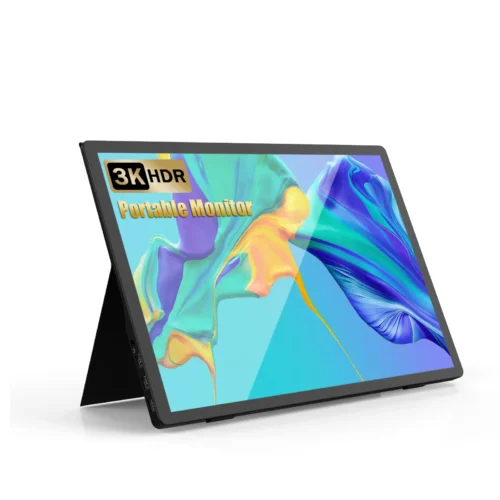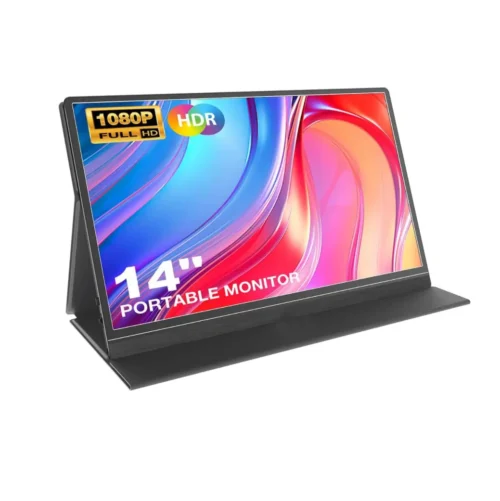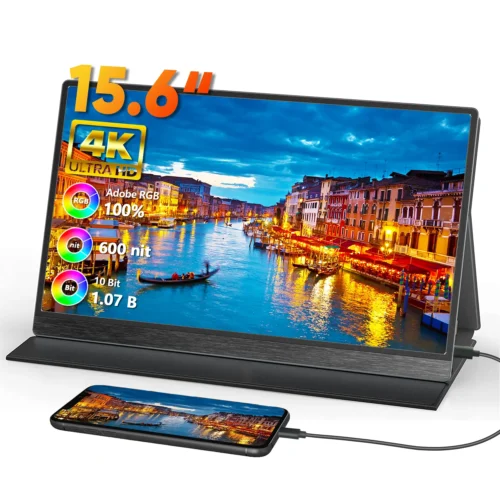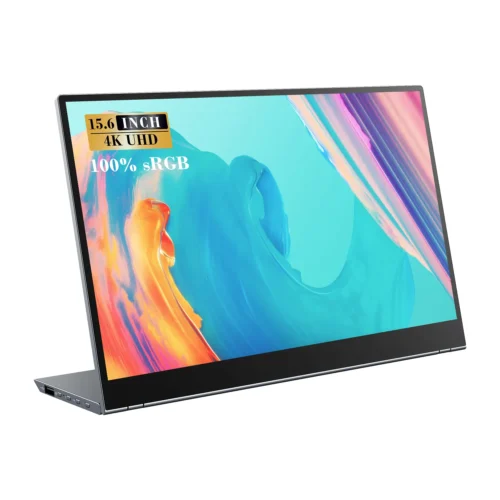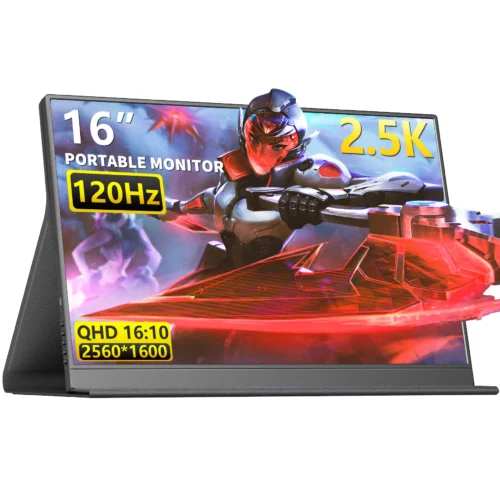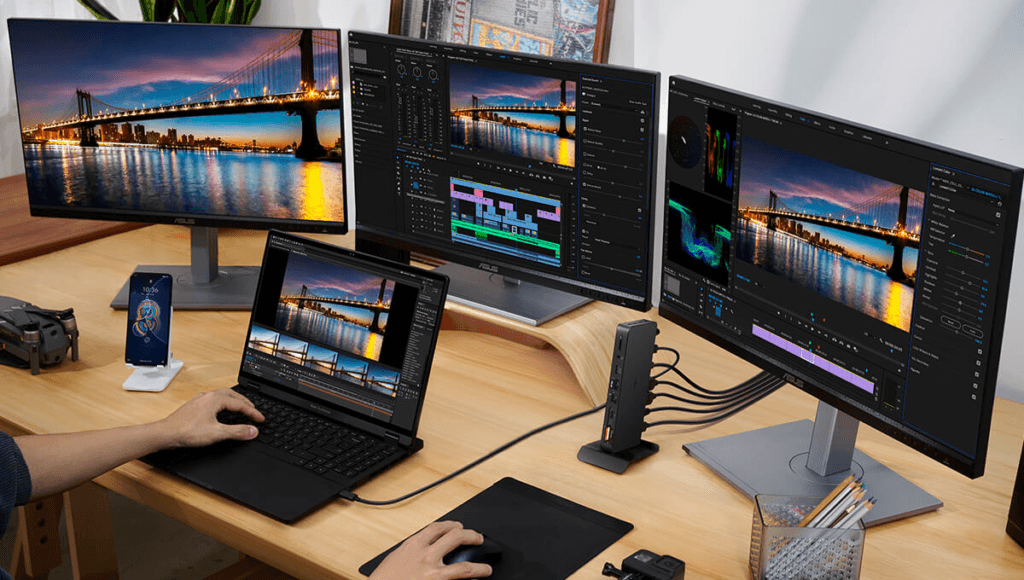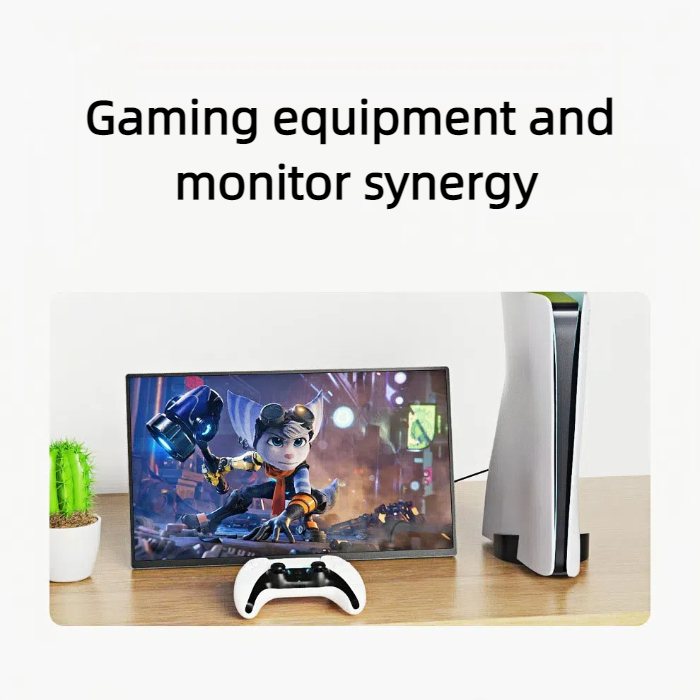
Gaming demands immersion, sharp graphics, and responsiveness. But small screens on consoles or laptops fall short when space or travel is a concern. That’s where a portable gaming monitor enters the picture. It offers a bigger screen without the bulk of traditional setups. And then the 4k portable monitor for amazing picture quality, and the portable dual monitor option for people who need more screen real estate. So, let’s see what these products offer, how they function, and where they’re most useful.
Table of contents
What is a Portable Gaming Monitor?
Old-school gaming PCs rely on large monitors or TV screens, supported by a living room or work desk. That setup has oomph, for sure, but it won’t leave with you. Console and laptop advances made games playable anywhere, though their small displays—generally 13 to 15 inches—are undersized. A mobile gaming monitor closes that difference. They are smaller screens, more like 15 to 17 inches, and they’ll hook up with a USB-C or HDMI into some kind of gaming machine such as a PS5, Xbox, or laptop.
Weighs less than two pounds most times, and thin too—about half an inch. Comes with no built-in battery or OS, so it pulls power from the host device. That keeps it simple, lightweight. Unlike a full desktop monitor, it’s a plug-and-play deal. Hook it up, and you’ve got a bigger canvas for your games. No need for a dedicated space or heavy gear. It’s a practical fix for gamers who won’t settle for less.
How does a portable gaming monitor work?
Think of it like a TV screen, shrunk and bare-bones. The screen has a panel—occasionally IPS for better colors and angles—plus ports to plug in. USB-C is common these days, carrying video and power in one. Older devices might need HDMI and a separate source of power, like a USB adapter. Most models have 60Hz, but some go up to 120Hz or 144Hz for improved action.
Resolution ranges. Standard ones are stuck at 1080p, which is good enough for most games. A 4k portable monitor, however, exceeds 3840×2160 pixels. That’s quadruple the resolution, but it will also use more out of your device—try your console or laptop on whether they actually output 4K before considering getting one. Power usage grows too, so battery life suffers. And finally, there’s the portable dual monitor setup: two monitors, both attached to your device. Needs a system that can handle dual outputs, usually via USB-C or a mix of ports. Adjust display settings—extend or mirror—and you’re set.
The sacrifice? No dedicated graphics card to be found. It’s all dependent on your computer’s GPU. Even then, companies like ASUS or Dell deliver enough oomph for casual to mid-level gaming. Sounded limiting, maybe, but the quid pro quo is portability and ease. Start with basic specs, swap cables or a secondary screen later—flexibility’s the watchword.
Applications of a Portable Gaming Monitor
A gaming monitor portable isn’t just one thing—it’s several, depending on where you use it. Most obviously is gaming travel. Add to a Switch or laptop in the hotel room, and you have an expanded, better screen than integrated screen. A faster shooter game or racing game receives better graphics at higher refresh rates—60Hz is fine, 120Hz is tighter.
Step up to a 4k portable display, and it’s all about aesthetics. RPGs or open-world games look stunning with sharper details—think foliage in Breath of the Wild or shadows in Cyberpunk 2077. Good for those who prioritize eye candy over raw speed. More to set up—cable quality matters, and power needs to be managed—but the payoff is well worth it for the right crowd.

And finally, there’s the mobile dual monitor setup. One screen for the game, another for add-ons—Discord, map, stream chat. Streamers use the setup to keep an eye on viewers without distraction. Or in co-op gaming, split resources among players without covering up a single screen. Efficient beyond gaming, too—video editing, browsing, even a movie on a plane. Miniature size fits anywhere: dorms, coffee shops, living rooms.
Businesses apply them to portability too. Use them for storing digital signage—plug in a monitor and a media player, and they’re discreet, cost-effective. Schools might find use for portable computers—fewer power draw than a full PC, fewer real estate dimensions too. Home theater’s an additional use. Stream Netflix off a laptop on a portable display—better than craning to see at a phone. Thing is, it’s not a one-trick pony, a gaming machine.
Wrapping It Up
A portable gaming monitor provides you with what tight screens can’t—size, clarity, freedom. Go for a 4k portable monitor if sharp visuals are the priority, or a portable dual monitor system if you multitask. It’s not about replacing a chunky rig; it’s about gaming well anywhere.
Need options? We at ONext design monitors that fit these needs—solid displays, easy to carry, reasonable price. Pick one that fits, plug it in, and game on your terms.
ONext Related Products
13.5 Inch FHD 3K Portable Displays Screen Slim Lightweight HDR Travel Monitor for external monitors for Laptop Xbox PS5 Switch
15.6 Inch FHD 1080P Portable Displays USB C HDMI External Display for Laptop Second Monitor
14.0″ Ultra Slim Monitor FHD 1080P External Display with Dual Speakers Second Screen for Laptop PC Phone Xbox PS4/5 Switch – A1 GAMUT Slim
15.6″ 4K External Display Travel Monitors Unleash Mobile Productivity With HDR And USB-C HDMI Connectivity
15.6 Inch FHD 4K Portable Displays Screen Ultra-Slim IPS Display Use For Multiple Screen Laptop
16 Inch Portable Monitor 2560*1600 FullHD 120Hz Gaming Computer Monitor Wide 16:9 Travel Monitors for Laptop Mac Phone Tablet PS4 Switch Xbox Built In Speakers,HDMI/Type-C Monitor
